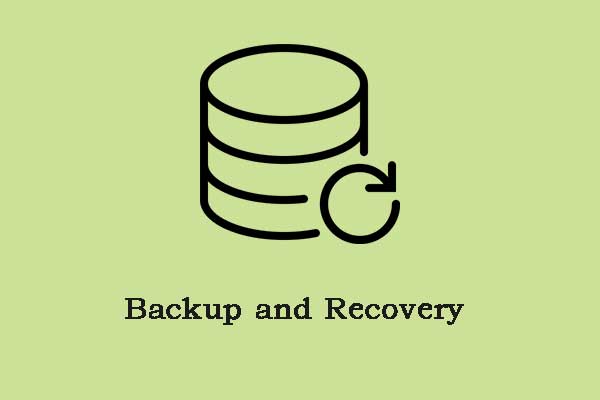What is database backup? Usually, users are more familiar with data backup, commonly used in daily backup for individuals. But this article on MiniTool will give you more information about database backup. Its types, methods, benefits, and challenges will be clarified in this post. If you are interested, please go on the reading.
What Is Database Backup?
What is database backup? Why do you need database backup?
First of all, before we learn about database backup, we need to figure out what a database is. Different from data, the database is a collection of data for easy access, management, and updating.
The database has many uses, such as improving business processes, keeping track of customers, and securing and storing personal data.
Besides, usually, a small database will be stored on a system file, while a large database on computer clusters or cloud storage.
But there are still some database challenges we need to notice – data security and integrity. The database is easily a valuable asset and that’s why cyber-attacks become rising day by day. We must put more stress on database protection. That’s the significance of database backup.
Database backup is the process of creating, managing, and storing copies of data, enabling copies of the database in case of any database crash, loss, or corruption. When you created a database backup plan, you can easily recover your data at any time.
The major reason pushing you to use database backup is data loss. There are some reasons for failure in a database.
- Software corruption
- Malicious hackers
- Hardware failure
- Human-made errors
- Power outages
- Natural disasters
Your data in the database is easy to lose and you may never find it back unless you perform a database backup. In this way, you can use this free backup software – MiniTool ShadowMaker – to back up your data. MiniTool ShadowMaker allows you to perform a system, partition, disk, or files and folders backup. Any data or database in your computer can be better protected!
MiniTool ShadowMaker TrialClick to Download100%Clean & Safe
Then the next part will introduce the types of database backup and database backup pros and cons.
Types of Database Backup
There are two types of backup – physical database backup and logical database backup.
Physical database backup – It means copies of database files and directories, including files, data controls, and archived logs, stored in a separate, dedicated storage, such as a disk, tape, or the cloud.
Logical database backup – It is a file that contains copies of database information, including information on tables, schemas, and procedures, commonly exported out as binary files using EXPORT/ IMPORT tools. However, logical backups are not enough to defend against data loss as they only offer structural information.
Database Backup Methods
There are four database backup methods you can choose:
Full database backup – It backs up all of the data in a database, taking a long time to transfer the copied information, the enormous volume of data, to the destination of choice.
Incremental database backup – It only copies the data that has been changed or created since the last backup. If you think full backup costs too much time, incremental backup is suitable for the voluminous data that needs to be protected.
Differential database backup – It is easy to be confused about incremental backup. Differential backups only capture data that has been modified since the last full backup.
Mirror database backup – Similar to a full backup, but with mirror database backup, all of the backed-up data will be saved as it was in the source and the copied data is easily accessed with a quick data recovery time. but notice that only the most recent data version is saved in the backup repository, with no record of previous versions of the files.
Note: MiniTool ShadowMaker contains these major backup methods – full, incremental, and differential backups – to manage your backup tasks. Let's have a try!
MiniTool ShadowMaker TrialClick to Download100%Clean & Safe
Pros and Cons of Database Backup
In this part, you can learn the benefits and challenges of database backup. First of all, we know that database backup and recovery are mainly used to prevent data loss.
This is the biggest advantage of database backup, apart from that, database backup can also be applied to maintain business continuity when they are undergoing some unanticipated disruptions.
Besides, database backup is also an important part of disaster recovery which assures preparedness and lowers the chances of accidental business disruptions.
But there are still some challenges the database backup has. The backup speed is one of the drawbacks. A database, usually, contains much information data sets in it; such a big volume will retard the backup speed.
Database backup can also cause oversized logs, further leading to a poor database backup strategy. You may expand the hardware disk space or add a temporary secondary log to address the issue.
Bottom Line:
This article has given you a full introduction to database backup and you may have an overall picture of this backup method. If you have any other questions about it, you can leave a message below.
![[Solved] How to Backup WordPress Site and Database?](https://images.minitool.com/minitool.com/images/uploads/2020/11/how-to-backup-wordpress-site-thumbnail.png)

![[Pros & Cons] Backup vs Replication: What’s the Difference?](https://images.minitool.com/minitool.com/images/uploads/2022/10/backup-vs-replication-thumbnail.png)